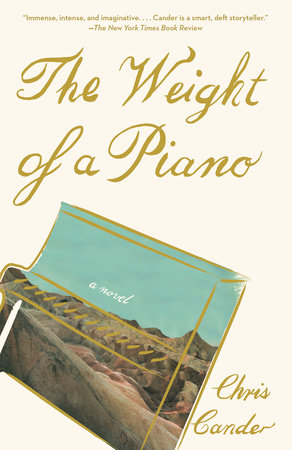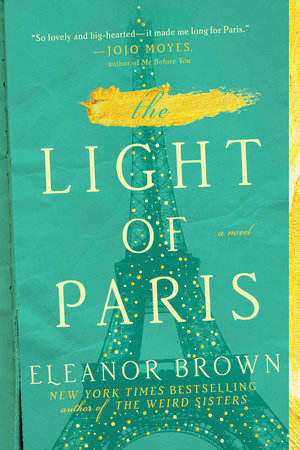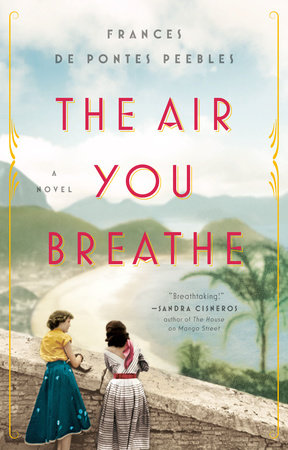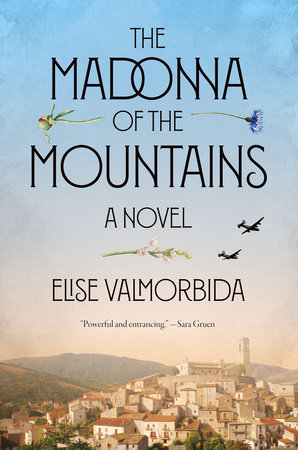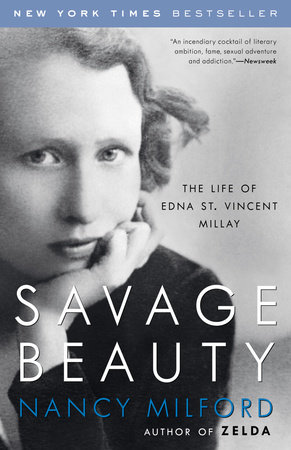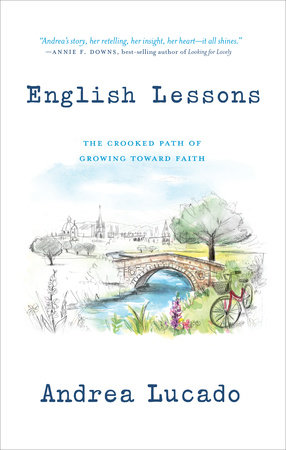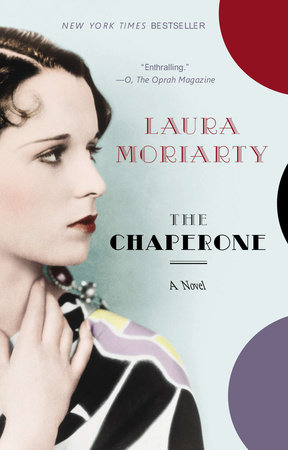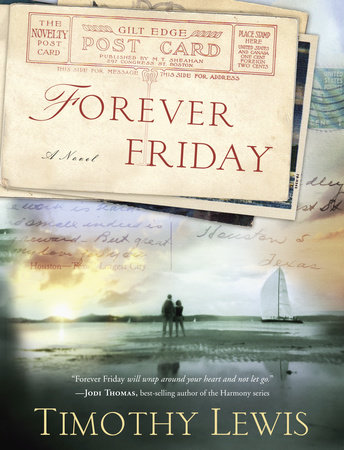Q: What inspired you to write this novel?
A: Unlike my other books, which arrived in my imagination on the shoulders of their protagonists, the idea for this one came from a story. I was invited to speak at a book club’s discussion of my first novel, 11 Stories, and afterward I overheard one of the readers mention that she’d finally found a meaningful home for the piano her father had given her when she was a little girl. She said she’d never learned to play, but felt terribly guilty about getting rid of it. I was immediately invested in that idea—the letting go of a treasured object—and asked her if I could borrow the idea. She said yes, and a book was born.
This is the first novel I’ve written where the incipient idea centered on an event (that of a girl being given a piano by her father, who then dies just a few days later) rather than on a character. But even the most compelling events don’t carry a story forward; it’s how the people who endure these events react to them, revealing their unique qualities and, hopefully, something about human nature in general.
Q: In The Weight of a Piano, you tell the stories of two remarkable women—Katya and Clara. Can you give us a little background on both?
A: First, you must know that I love these women like family, which is true of all my characters. They’re strong and flawed and wonderful and interesting. I felt Clara before I saw her in my imagination; her orphanhood, her solitude, her struggle to create and maintain meaningful attachments to objects and people all came through viscerally. But I also felt strongly that she was a badass, able to take care of herself and suffering no fools in her life. I grew up watching my stepfather, with whom I’m very close, work on cars, so it was natural to turn Clara into an auto mechanic. Even as she evolved in my mind, I still couldn’t picture her, so I sat down one afternoon with the intention of conjuring her image. My daughter walked into my office and interrupted my meditation, and when I looked up, I saw Clara.
Katya felt altogether different from the beginning: soulful, physically delicate, intellectual, also as she got older,depressed, forlorn, and increasingly detached from reality. Her strength comes through differently from Clara’s,but they both are capable of enduring and transcending pain, loss, and fear, yet still remaining vulnerable to lovein the process.
I don’t write autobiographically, but there’s some part of me in every single character I create. I follow theadvice of the playwright August Wilson, who said, “Confront the dark parts of yourself, and work to banishthem with illumination and forgiveness. Your willingness to wrestle with your demons will cause your angels tosing.”
Q: The novel begins with a beautiful and detailed description of the making of a Blüthner piano, an objectthat we later learn connects both Katya and Clara. What role does music play in both of their lives?And what kind of research did you need to do about pianos and the music world in general for this book?
A: I’m not a pianist, but happily I know quite a few. Early on, I knew that Kayta was a Soviet Jew and a concertpianist, and that her beloved piano would need to be special. Eventually I was put in touch with HelgaKasimoff, a Blüthner dealer in L.A. She and her late husband have been helping people import Blüthners fromEurope for more than fifty years. We talked for hours. She not only helped me imagine “my” piano—a Czaristeraupright with an ebonized case—but also taught me so much about what life was like for people like her andher husband to immigrate to the United States and leave so much behind.
From there, I reached out to the Blüthner factory in Leipzig, Germany. Kristina Richards was the marketingcontact there at the time, and she answered countless questions about the history and manufacture of Blüthnerpianos, enabling me to solve dozens of hypothetical scenarios, and even read a draft of the manuscript to checkfor inaccuracies.
I attended a local piano guild meeting, and interviewed several piano technicians. I befriended another one inthe U.K., where Blüthners are more common, and he sent me photos of the inside of an upright he came acrossthat nearly matched mine in the novel. I spoke to four separate piano moving companies. I watched a piano beingtuned. Because I knew so little to start with, I needed so much help to write about even the smallest detailsauthentically. The same is true of selecting and writing about the music itself: I read books, watched interviews,and talked to my musician friends. Ripping off the famous Martin Mull dictum, I’ll say this: “Writing aboutmusic is like dancing about architecture.” I hope I pulled off my Winter Palace waltz.
In the novel, music is secondary to the instrument itself, but there is one piece that plays like a soundtrack tothe story and links its two narratives: Alexander Scriabin’s frenetic, colorful Prelude No. 14 in E-flat minor. Iwanted a piece that might have been a favorite of the Russian concert pianist who first owned the eponymouspiano, and was also unusual enough to charge a moment when it is recognized by another character years later.There was something serendipitous about this piece that I didn’t realize until after I’d chosen it. One of mycharacters, the son of the original piano owner, is a photographer who describes his purpose in taking pictures as“so that you may hear what it is that I see.” I hadn’t known when I gave him this trait of chromesthesia (a formof synesthesia in which sounds translate as colors) that Scriabin was also a chromesthete.
I find it interesting how important and prevalent music is in my books, because the only musical talent I have is the ability to appreciate it. In life and in fiction, I try to follow Hafiz’s recommendation: “Stay close to any sounds that make you glad you are alive.”
Q: Katya moves from Russia to California with her husband – what was it like to put yourself in the mindset of someone who left home and immigrated to the United States?
A: My father was a commercial pilot, so I traveled extensively from an early age. When I was in college, I spent two consecutive summers studying abroad, first in Bourges, France, and then in Madrid. After graduation, I moved to a small town in Venezuela called Punto Fijo, where I lived for a little over three years. It was probably that experience that most informed my empathy for Katya. My neighbors didn’t speak any English, the climate and culture were completely different from my own, and for a long time I felt profoundly lonely. It was easy to imagine how much worse it would’ve been if I knew that I’d never get to see my family again. Katya did her best to fit in, as I did, but she was always an outsider. I’m grateful that I had the experience of being an immigrant, so I could better understand her plight.
I was also fortunate to have the compelling input of several Soviet emigrants who were willing to share their stories with me. They provided logistical details and illuminated emotional journeys I couldn’t have imagined on my own.
Q: Was it challenging to then change perspectives and write from Clara’s point of view, since her circumstances differ so greatly from Katya’s (living in California her whole life, working as a mechanic and bouncing from one relationship to the next)?
A: In terms of narrative, I had to consider which moments comprising each woman’s story were essential to the novel as a whole. So in each chapter I tried to re-enter the character’s life at a point when she encountered some interesting trouble that would inexorably dictate the course of events: when they either braced against or yielded to forces beyond their control, when they made choices with cataclysmic consequences, when they buried their shame and secrets, or when they followed their desires. The two storylines needed to intersect at critical moments, so I was careful in deciding how to unspool them.
From a mechanical perspective, I kept track of everything with meticulous timelines and lists. If I changed a date, for example, I’d go back and make sure that everything affected by it was also changed: the characters’ ages, the phase of the moon, the temperature, the day of the week.
Q: Some of the most powerful scenes in the book happen in Death Valley. Have you ever been there? What is it like, and why did you decide this is where you wanted to set a crucial portion of your novel?
A: I have a canvas print by Clayton Austin, a Texas-based photographer, of an old upright piano in the middle of the Devil’s Golf Course that I look at all the time. So when I realized that one of my characters wanted to photograph the novel’s piano, I knew his shoot had to be in Death Valley. I’m a decent photographer, but I’d never been to the park, and I’d certainly never imagined the opportunities and obstacles that one would encounter there, especially with an upright Blüthner in tow. I contacted John Batdorff, who’d run several photography workshops there. With his help, I put together my characters’ itinerary and started writing. But imagining a setting like Death Valley, relying on other peoples’ photos and Google Earth and travel blogs, is one thing. Actually being there is quite another.
I’d already written much of the book when I learned that John and his wife Staci had a spot left in the workshop scheduled for the exact week in November that I planned to have my characters Clara and Greg going there. And out of the three million acres that the park comprises, the workshop included the same places I’d already written about. This felt like fate, so I booked my tickets. I bought a tiny metal pencil sharpener shaped like a piano on an auction site and carried it with me to all the sites where Greg had photographed Clara’s Blüthner in my book. In the photos I took, it doesn’t look like a real full-size piano, but pretending it was certainly made for an interesting exercise.
As helpful and necessary as this preliminary work was, it wasn’t until I was actually there that I realized how many essential details I would’ve missed otherwise. I couldn’t have known how long and fairly monotonous the drive was from Las Vegas to Death Valley Junction, or how to buy park passes at the pay station, or how quickly the shadows swallow the basin when the sun dips behind the Funeral Mountains or that you could walk for miles across an ancient lakebed and feel like you weren’t going anywhere, or how heavy those enormous honeycomb chunks of salt are, or what it’s like to stand at the lowest point on earth and crane your neck to see the sea level marker 292 feet above, or that you have to set your jaw while driving on the washboarded road to Racetrack Play to keep from chipping your teeth.
I’m so glad I had a chance to experience my characters’ journey there, and hope I managed to illuminate the grandeur of the park in the book.
Q: Why did you want to explore the idea of the emotional weight of objects in this novel?
A: I’ve long struggled with my relationship to objects with provenance, mostly because by nature I appreciate minimalism and order. But I was born into a family of artists and archivists, and we have a lot of stuff: my grandfather’s countless woodworking treasures; handmade quilts and blankets from the women on my mother’s side; my father’s photographs, souvenirs, and mementos that have been passed down from one generation to another. Part of me wants to preserve everything with the care and love it deserves, and part wants to set it all on fire. So the idea of a woman having only a single physical object—an enormous, expensive, burdensome one—that represents both her parents and her lost childhood fascinated me. I wanted to know what she’d do with it, and then I wanted to know what it might’ve meant to all the people who’d encountered or possessed it before she had.
Q: You’re a former firefighter, competitive bodybuilder, current holder of a 3rd dan in taekwondo, and a women’s self-defense instructor. That’s a pretty astonishing resume. Can you talk a bit about your wide range of interests?
A: They might seem varied on the surface, but underneath, my interests are very much alike in that they all demand a great deal from me both physically and mentally. When I was younger, I was drawn to activities for which I had a natural aptitude, but then discovered that I couldn’t feel really passionate about anything that didn’t require more of me than I thought I was really possible. Whether this challenge comes in fighting fire, lifting weights, or breaking boards, it’s the discipline and devotion that makes it meaningful. It’s taken me many years to develop my skills in those areas, and I’ll never be an expert; there’s always more to learn. I feel the same way about my writing, where I try to constantly push myself toward the hardest things, to be brave and vulnerable and fearless and reverent in everything I write.
Q: What do you hope readers gain from reading The Weight of a Piano?
A: I’d be honored if readers could lose themselves in the pages of the book—and find something of themselves there, too.
